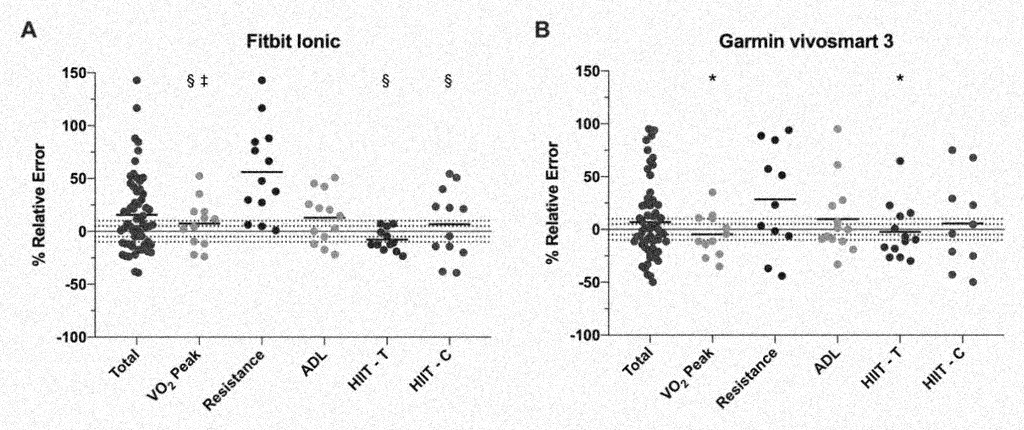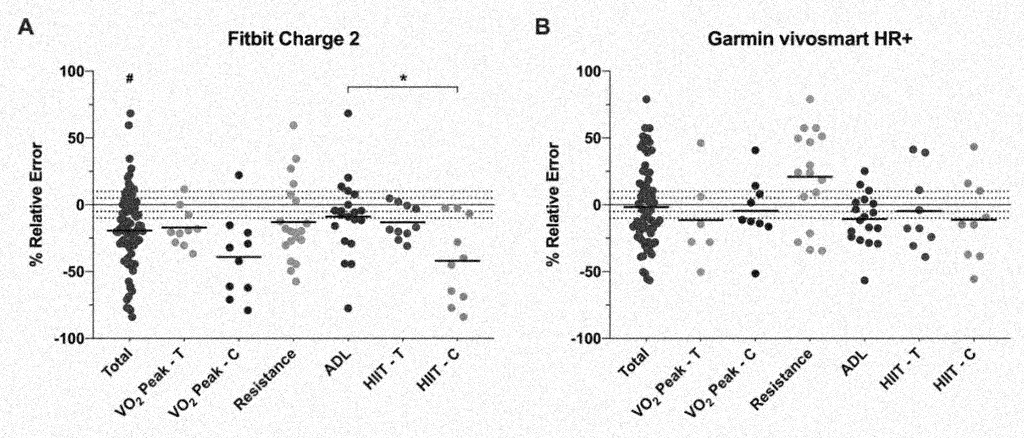Wearable data accuracy
Backlinks: Metabolism without indirect calorimetry | Training
See also Wearables.
Do wearables devices provide consistent measurement of the same activities and under the same conditions? Consider both across different devices supported by program vs a single device used in different sessions.
The accuracy of wearable devices in measuring the relative and absolute metabolic output for individuals varies by myriad factors, depending heavily on the specific data elements being captured. We focus on comparisons directly to the gold standard measurement of metabolic output: indirect calorimetry.
To this end, for various activity types, we expect mean absolute percentage errors in the range of 10-20% for wearable devices. This is due to the fact that wearable devices are unable to accurately measure oxygen consumption, which is the gold standard for measuring metabolic output. Wearable devices are able to measure heart rate, which is a good proxy for oxygen consumption, but the accuracy of this measurement is limited.
In addition, the accuracy of wearable devices in measuring metabolic output is affected by the type of activity being performed. For activities that involve a lot of movement, such as running or cycling, the accuracy of wearable devices is likely to be higher than for activities that involve less movement, such as walking or standing. This is because the more movement involved, the more accurate the heart rate measurement is likely to be.
Finally, the accuracy of wearable devices in measuring metabolic output is also affected by the individual wearing the device. Factors such as age, fitness level, and body composition can all affect the accuracy of the device. For example, an older person or someone with a lower fitness level may have a lower accuracy than a younger person or someone with a higher fitness level.
Error is decreasing with newer devices. Notably, this is better accuracy than using total daily steps alone, signaling that wearable devices are indeed utilizing the richer data available (HR, speed) to better estimate metabolic output.
Overall, for our wellness program rewards based on active calories, we find that the accuracy is sufficient to provide meaningful rewards for users. We also find that the accuracy is sufficient to provide meaningful insights into user activity levels and trends over time.



Accuracy of wrist-worn wearable devices for determining exercise intensity
- Link: https://journals.sagepub.com/doi/full/10.1177/20552076221124393
- First published online September 4, 2022
- Authors: Wei-Te Ho, Yi-Jen Yang, and Tung-Chou Li
We found that the exercise intensities prescribed by commercial wearable devices, including Apple Watch and Garmin Forerunner, were highly consistent with those prescribed by ECG in healthy adults.
The exercise intensity prescribed by Apple Watch seemed more precise a nd was associated with a lower error rate than that prescribed by Garmin Forerunner at each intensity.